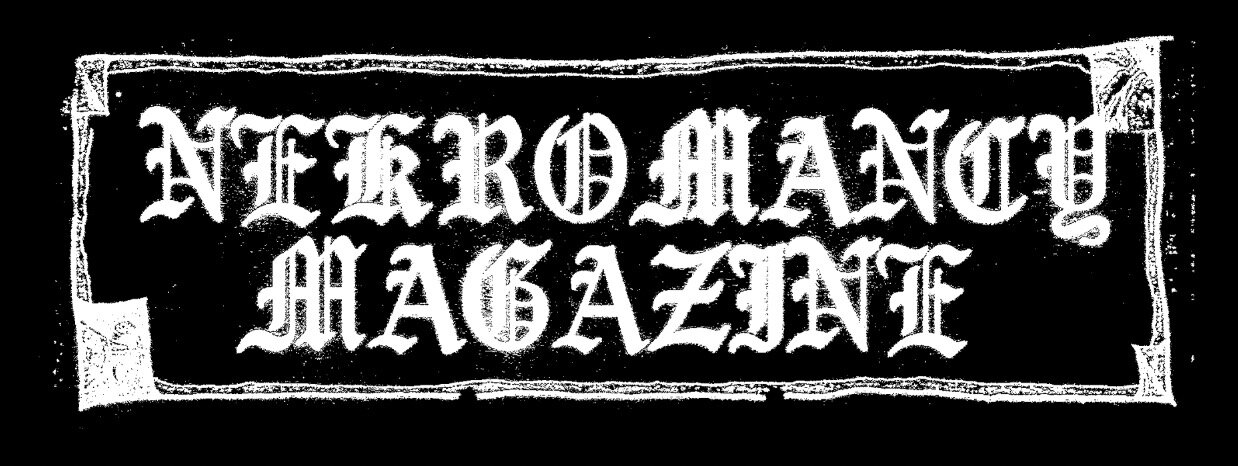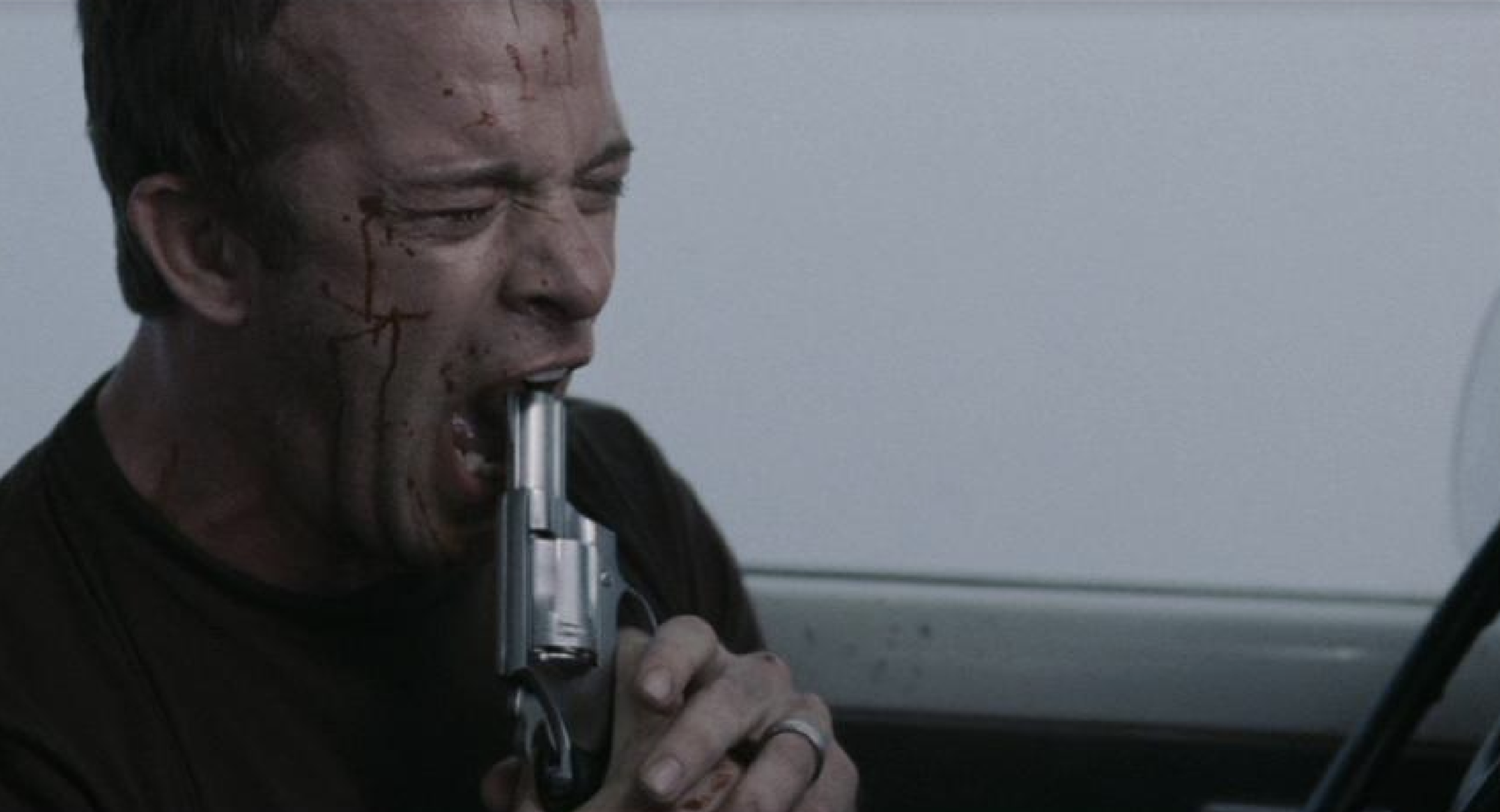The Mist: The Personification of the Unknown and How It Breaks You
July 22, 2021 ● Mike Slater
The Mist (2007), Dimension Films
H.P. Lovecraft famously professed, “The oldest and strongest emotion of mankind is fear, and the oldest and strongest kind of fear is fear of the unknown”. From the outset, this fear seeps into every pore of Frank Darabont’s The Mist (2007), beginning when local resident, Dan Miller (Jeffrey DeMunn) bursts through the entrance to the Food House supermarket, screaming frantically “Something in the mist! Something in the mist took John Lee!” the eponymous mist stalking closely behind. As the mist envelops the small town of Bridgton, Maine, our protagonist David Drayton (Thomas Jane) and his young son Billy (Nathan Gamble) are stranded in the supermarket with 50-or-so stragglers. With only Dan’s hysteric testimony to trust, as an audience, we immediately put ourselves in the place of the stranded. How would we react here if we were in their shoes?
Some don’t believe him and flee into the mist, never to be seen again. Those who remain are none the wiser, a quiet dread creeping over them. The mist itself, a physical manifestation of the unknown, inhibits the characters sight and is seemingly devoid of sound, causing their imaginations to run wild with potential horrors that may reside within. Not long into the film, however, they come face to face with the first of many nightmarish creatures, yet the unknown quantity doesn’t disappear, it evolves, becoming something entirely more sinister.
The creatures lurking in the mist cannot be quantified by any known metric. Throughout the history of cinema, the term “creature” has been used as a catchall to denote the unrecognisable. Those monstrosities that are so unfamiliar to us they cannot be categorised. The human subconscious can distinguish the difference between a Vampire and a Werewolf, for instance, both with their own set of rules, but what about the nameless beings that are singular in nature? The Thing, The Fly and The Creature from the Black Lagoon are all defined as creatures, not because they are similar in form or origin, precisely the opposite. They exist in a plane beyond current human comprehension, they are unexplainable, and they personify the unknown.
The Mist (2007), Dimension Films
Whether it’s the tentacle-fuelled nightmare that slithers under the shutter, or the impossibly tall behemoth over the highway, there’s no denying the creatures in the mist are frightening. Though they simply facilitate the true horror of the story... What happens to the human mind when it is met with something it cannot comprehend?
Once the creatures are seen by a select few, the survivors are split into two camps: the believers - headed by Drayton, who have seen the creatures first hand and the dismissive - those who weren’t privy to the incident and are dubious of Drayton’s wild claims of tentacled creatures; the evidence of which has conveniently dissolved. Confrontations turn heated when societal factors come into play. Before the aforementioned tentacle incident, local mechanic Jim Grondin (William Sadler) becomes defensive after Drayton warns him not to go outside. “(I don’t) like being talked down to, or being called stupid by a guy who went to college”. Instead of objectively viewing the bigger picture, Jim is more concerned with his own perceived shortcomings in regards to his intellect. Once his mind is changed after witnessing the death of Norm (Chris Owen), the bag boy, he joins forces with Drayton to tell the others of the dangers in the mist. Here they are met with fierce resistance from Brent Norton (Andre Braugher), an inner-city lawyer and Drayton’s neighbour. He accuses the group of taking advantage of the situation “to make (him) look like an idiot”; concerned only with his own ego, he turns spiteful, referring to the townsfolk as “hicks” and alleges they are banding together against him, due to his prior run-ins with Drayton. Here Norton brings to light wholly human traits, such as prejudice and self-importance, which are used to dismiss the real issue as a hoax; he shows how we, as humans, contextualise problems to fit our own parameters of reality and also how people can turn aggressive and even violent when their belief systems are threatened.
The Mist (2007), Dimension Films
These societal divides and personal beliefs fade into irrelevance once everyone sees the horrors of the mist with their own eyes. This turning point comes when, attracted to the light, dozens of insect-like creatures burst through the windows of the supermarket, sending the townsfolk into a frenzy. In the aftermath, the survivors resort to drastic measures to refrain from descending into madness. Of those that do not take their own lives, the majority become zealots under the will of Mrs Carmody (Marcia Gay Harden), a religious fanatic, who believes the mist to be the wrath of God. Before the creatures appeared, the locals believed her to be mentally unstable, some pitying her, others scorning her; but once the creatures attack, she is the most resolute of the group, seemingly revelling in the cataclysmic events as if vindication for a life of ridicule. Those, like Jim, who are weak-willed and have nowhere left to turn, follow her rule absolutely. Losing all sense of logic and reason, they resort to their primal instincts, even willing to perform human sacrifice to appease the heavens. Here, Darabont, and Stephen King in the original novella, comment on how religion is humanity’s de facto response to the unknown, in particular, the great unknown: what happens after death. Faced with impending doom, the survivors have nothing left to cling to but blind faith, grasping at straws to make sense of what has transpired, believing Mrs Carmody’s parallels between the night’s events and the biblical plague of locusts.
The Mist (2007), Dimension Films
After escaping Mrs Carmody’s cult, the remaining survivors flee the confines of the supermarket. Five make it to the jeep and drive as far away as possible, until... They run out of fuel. Stranded with seemingly no hope of survival, they are unsure of what terrible fate awaits them or when that may be. They have 4 bullets left, yet 5 of them remain. Drayton does what has to be done. What happens next is so effective because the film doesn’t linger. Given how unspeakably horrific the act itself is, it is still the next logical step and the film treats it as such; it is the path Drayton has taken leading up to this point, one of perceived rationality.
The scariest part of this end sequence is that the viewer’s response is likely one of agreement. I’d argue most people would do the same, given the circumstance. The irony, however, is that Drayton has been fighting this entire time to do one thing: protect his son. Yet he has purposely murdered Billy to spare him from his unknown fate. Though, once he has lost what he was so afraid of losing, the unknown no longer fazes him. The creatures are still out there, they are no less dangerous and he is still in as much peril as before, but he now wills the creatures to take him; his mind shattered, he is unable to process the sin he has committed. The unknown fate that awaited them frightened Drayton so deeply; it forced him to destroy the only thing he loved before it had a chance of being taken from him. The stinger of a twist in the final few frames reveals to the audience the sobering realisation that we too lost our rationality. There was still hope; we were just too frightened to see it.
Mike Slater ● Writer
Mike is a film and video game writer based in Manchester. A (mostly) benevolent contrarian, he likes to dissect the “bad” to shine a light on the artistry lurking within. As a lifelong horror fan, he’s always on the hunt for nightmare inducing cinema.




